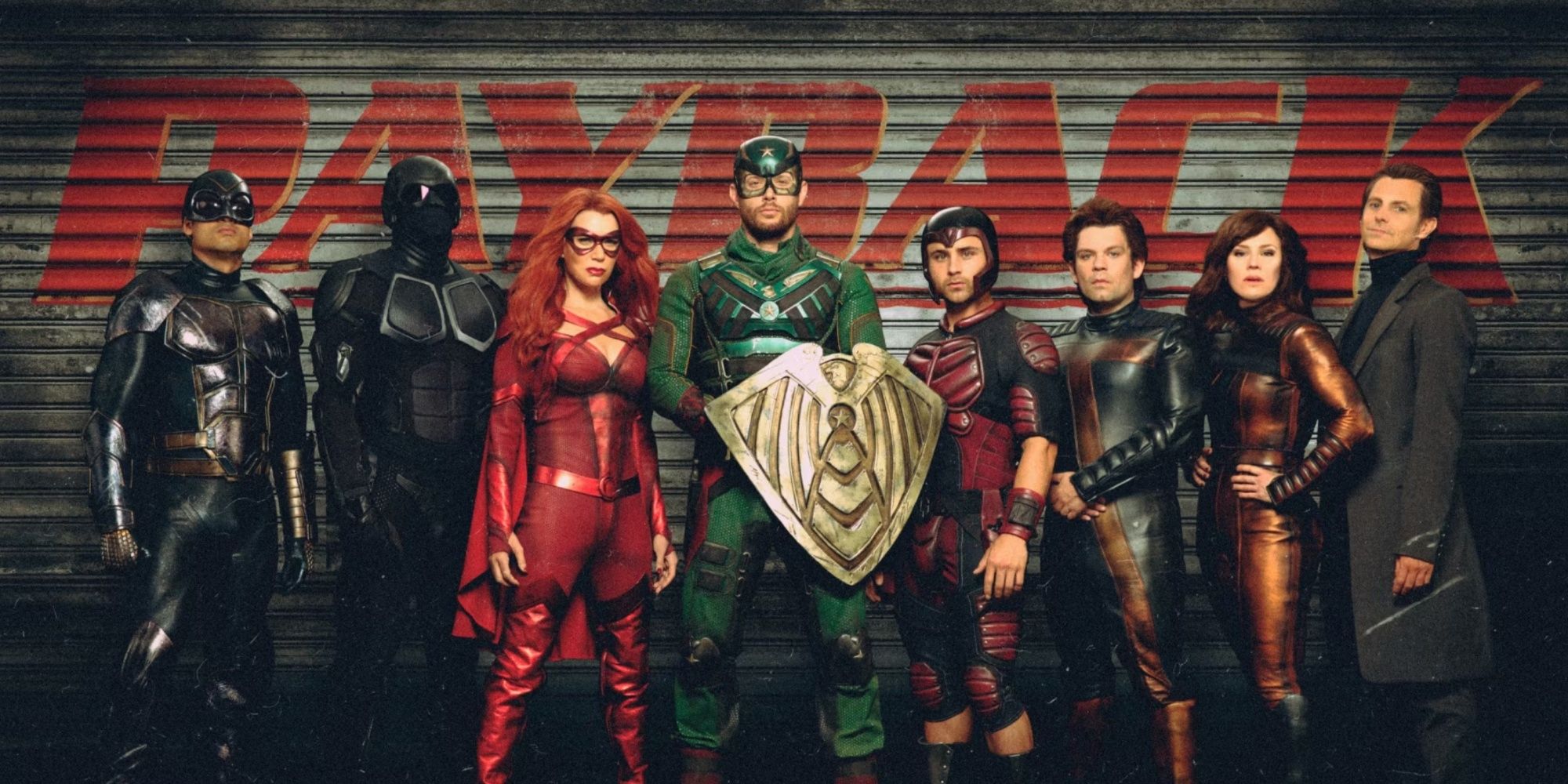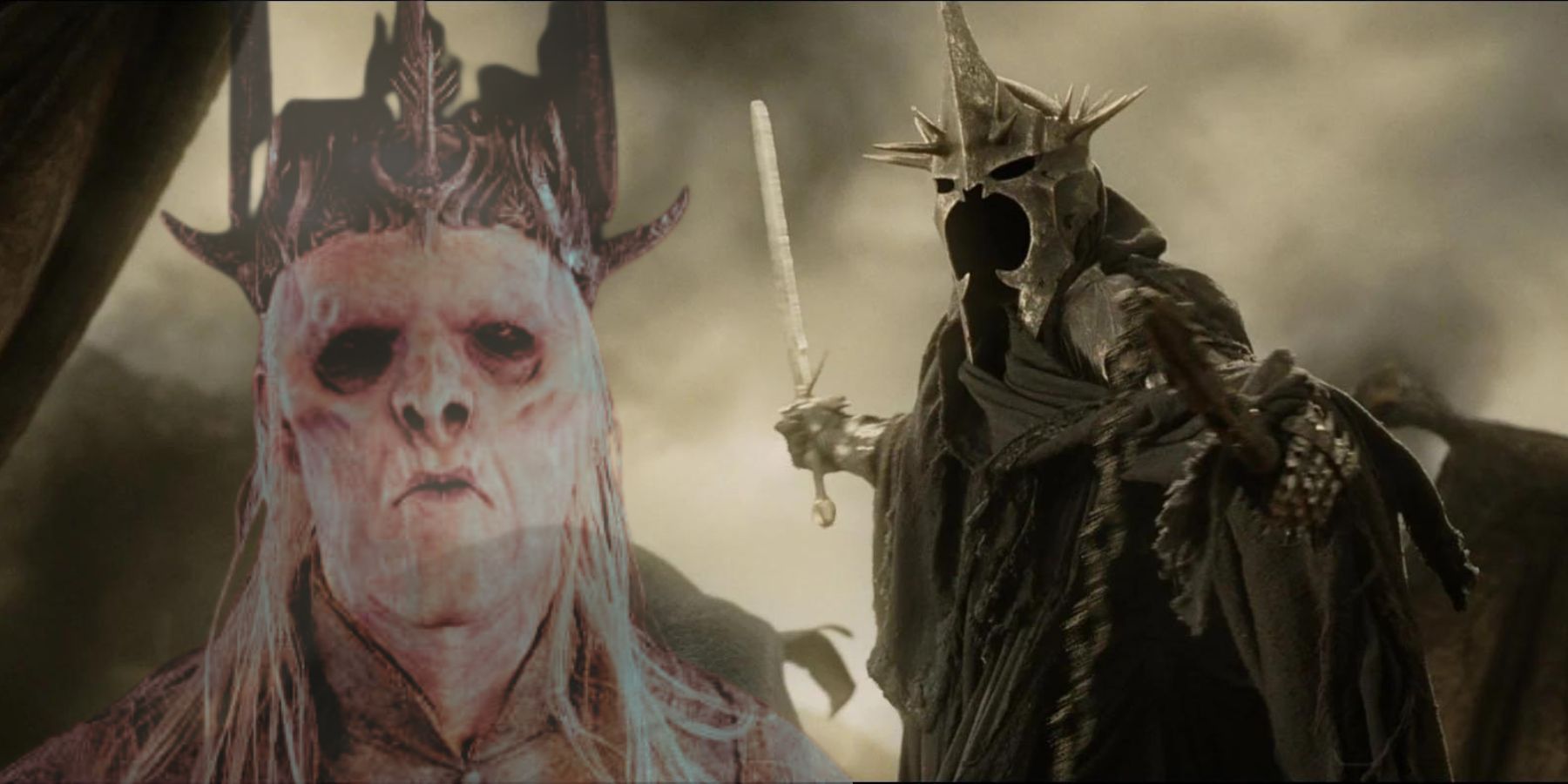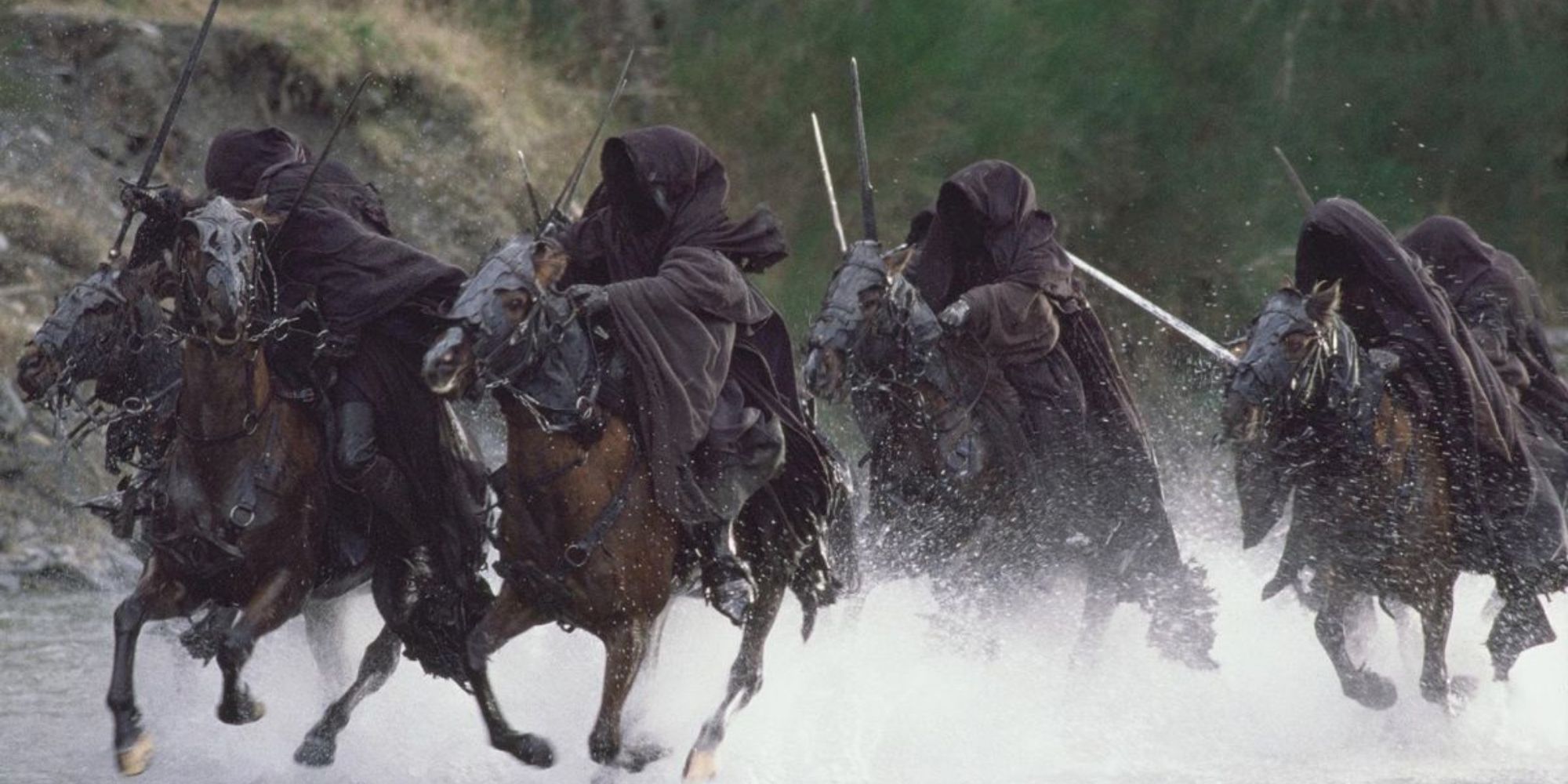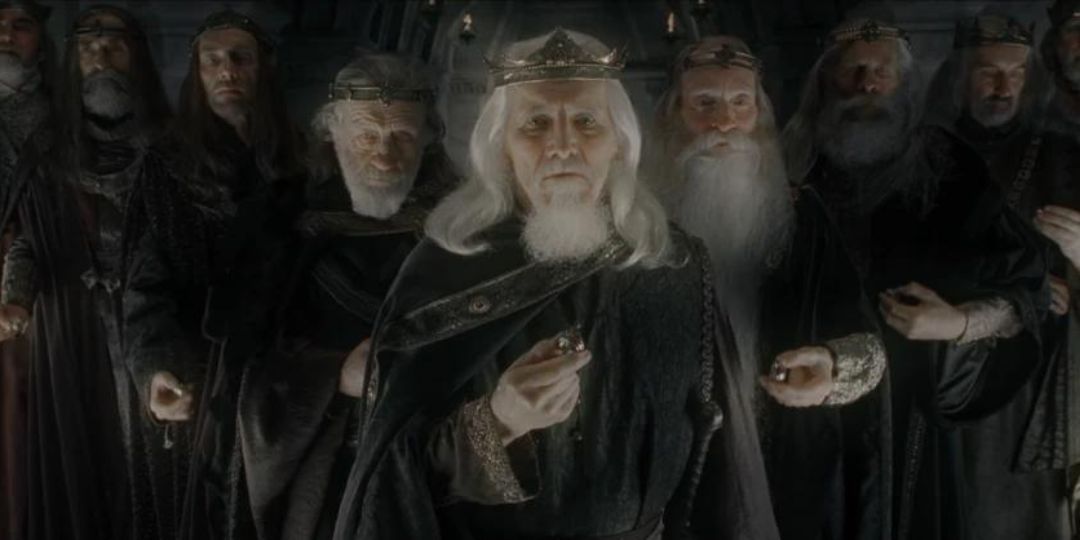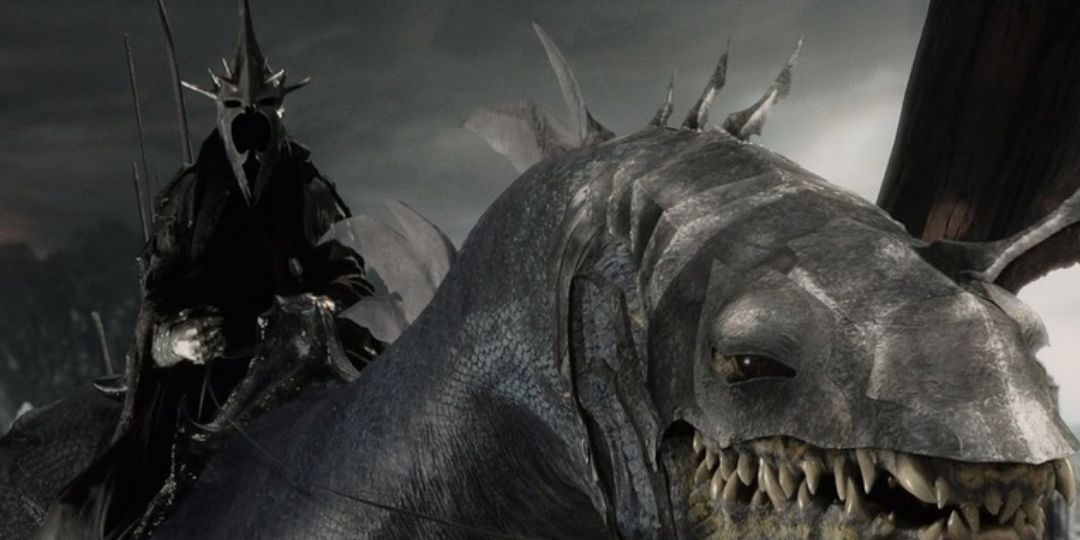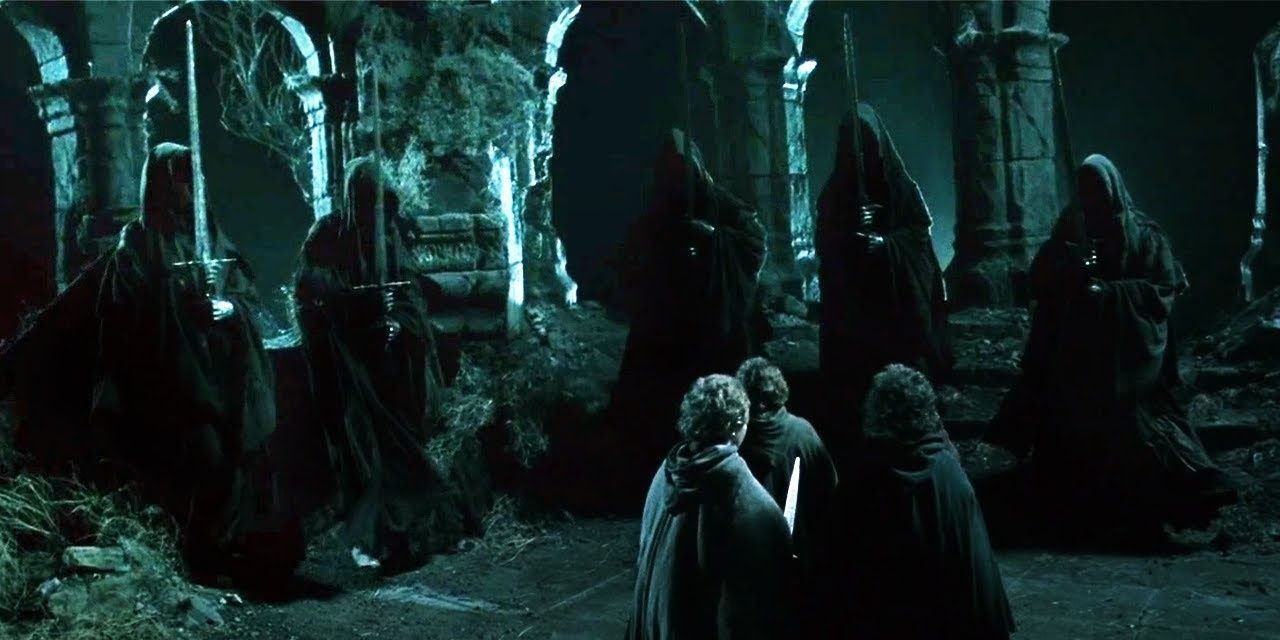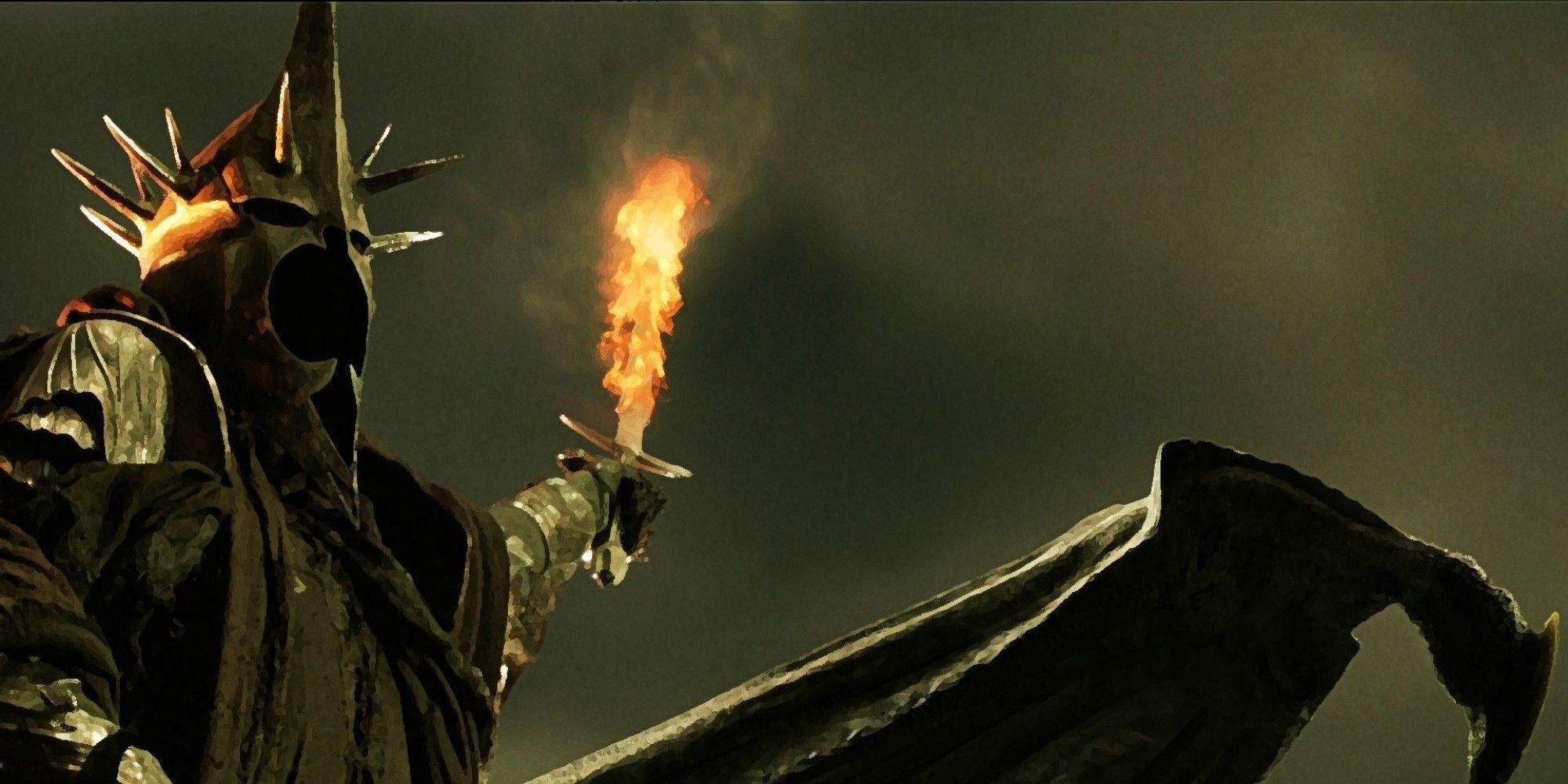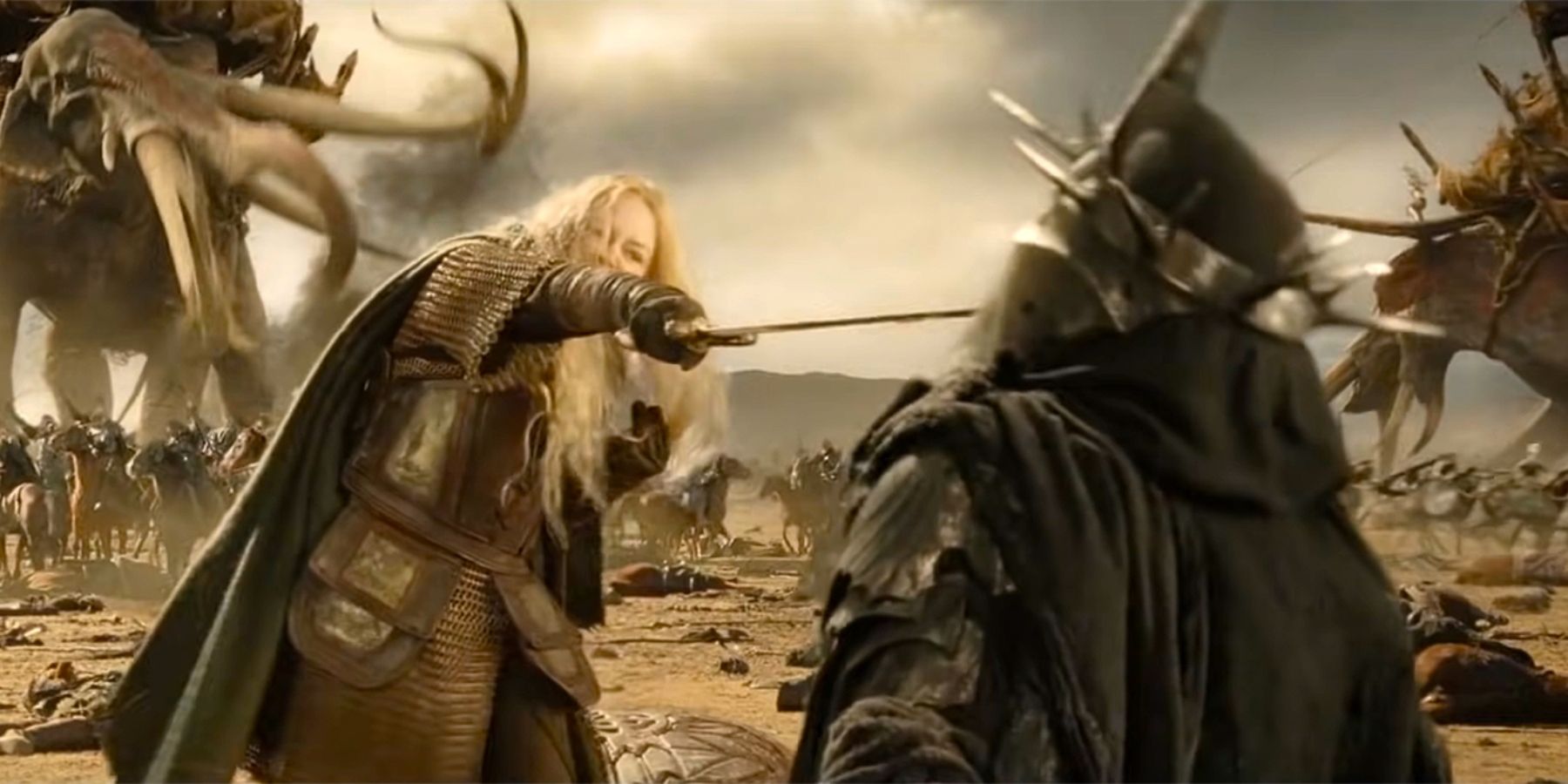Some of the most haunting characters in J.R.R. Tolkien’s The Lord of the Rings trilogy, the Nazgûl are perhaps the most recognizable and dreaded agents of the Dark Lord Sauron. Also called Black Riders, the Nazgûl are led by the Witch-King of Angmar, Sauron’s second-in-command during the Second and Third Ages of Middle-earth.
But before the Captain of Despair presided over The Nine riders, he was someone — and something — else entirely. So, who was the Witch-King before he served Sauron, and how did he and his riders become Nazgûl?
What Are The Nazgûl?
Early on in The Lord of the Rings books, Gandalf describes the Nazgûl, or Ringwraiths, to Frodo Baggins. The wizard delves into their history, which is intertwined with Sauron’s dark schemes and the creation of the Rings of Power. Forged by Celebrimbor, the Rings of Power were taken by the deceitful Sauron, who had once served as the first Dark Lord Morgoth’s lieutenant. Instead of taking Middle-earth openly, Sauron relied on manipulations, and bestowed the rings upon Men, Dwarves, and Elves.
When it comes to the origins of the Nazgûl, it’s the nine rings of Men that matter the most. Sauron bestowed them on Men’s most important lords and warriors, including three Númenóreans — Men from the now sunken but once greatest civilization of Men — and even an Easterling king. The nine Rings corrupted these powerful bearers, and Sauron held dominion over them thanks to his own ring — the One Ring. Though corrupted by the rings’ influences, the Nine used the Rings to amass wealth and power during their lives until, eventually, the Rings turned them invisible — only to be seen in the wraith world — and bound them to Sauron’s will.
How Did The 9 Men Become Nazgûl?
Thanks to the insurmountable influence of the One Ring, the Nine grew more powerful (or weaker) in turn with the Dark Lord. While they became powerful instruments in Sauron’s schemes during the Second Age, the Nine are more well-remembered for their activities during the Third Age, especially during the War of the Ring. “Long ago they fell under the dominion of the One, and they became Ringwraiths, shadows under his great Shadow, his most terrible servants,” Gandalf tells Frodo of the Nazgûl, suggesting they were dispersed after Sauron’s first defeat at the end of the Second Age.
Much like their master, the Nazgûl are unable to maintain a truly physical form after Isildur cuts the One Ring from Sauron’s hand at the end of the Second Age, during the Last Alliance of Elves and Men. During the Third Age, they manifest as shadow-like entities, only able to endure so long as the One Ring remains. When Sauron begins to regain his “footing” (so to speak) during the Third Age, his right-hand servant, the Witch-king, establishes a base of operations in Angmar and attacks the nearby Kingdom of Arnor.
When the Númenóreans fled their sinking kingdom for the shores of Middle-earth, they established Arnor in the north as well as the southern stronghold of Gondor. When the Witch-king of Angmar launches a campaign against the fragmented Arnor, Gondor and its allies are caught up in a war with the Wainriders (Sauron apologists who are united by their hatred of the Men of Gondor) and unable to aid the sister kingdom of Arnor. While fugitives of Arnor escaped and formed the Rangers of the North — the very same group Aragorn spends his formative years with — they posed no threat to the Witch-king.
Eventually, Gondor sends aid, but it’s much too late. The campaign to save Arnor is abandoned, with Gondor’s forces instead seeking revenge on the Witch-king’s army. While Gondor succeeds in defeating the Witch-king’s forces (for a time), the leader of the Nine returns and, as a result of Gondor’s inability to watch over Mordor, gathers the eight other Nazgûl to lead an onslaught against the Gondorian city of Minas Ithil. The city, of course, becomes the dreaded Minas Morgul – the Nazgûl’s base of operations, and the place from which they rebuild Sauron’s army in preparation for the Dark Lord’s return.
Can The Nazgûl Survive Without Sauron?
From here on, things will sound familiar to fans of The Lord of the Rings. A few years before the War of the Ring, Sauron’s armies capture Gollum — a creature corrupted by the One Ring, which he happened across after it had been lost for centuries following Isildur’s death — and torture him for information. Gollum tells Sauron the family name of the Ring bearer and about the Shire, so Sauron sends the Ringwraiths to fetch the Ring from Bilbo and Frodo Baggins.
Throughout the trilogy, the Fellowship has many run-ins with the Nazgûl, both atop their wraith-horses and their winged fellbeasts, and it becomes clear that the destruction of the One Ring — and, by extension, Sauron — is the most surefire way of destroying the Nazgûl. Much like Sauron, the Nazgûl endure because of the Ring; they are tethered to Sauron’s will and life-force, which itself is entwined with the One Ring. If Sauron dies, the Nazgûl die, too.
Who Was The King Of Angmar?
The Witch-king of Angmar is also known as the Lord of the Nazgûl — and about a half dozen other names. Notably, he’s Sauron’s second-in-command before and during the War of the Ring. Tolkien never confirmed the Witch-king’s exact identity, but context clues point to him being one of the three noble lords of Númenor who received a Ring of Power (and was subsequently corrupted). When he reappeared during the Third Age to found the evil realm of Angmar – from which the lead Nazgûl derives his name — the Witch-king also took charge in preparing for Sauron’s return.
From orchestrating the takeover of Minas Ithil to killing the last of Gondor’s kings (for a time) to rebuilding Sauron’s orc army, the Witch-king of Angmar proved indispensable. During the books of The Lord of the Rings, the Witch-king notably stabs Frodo Baggins early on in the Hobbit’s journey. In the final novel, the Witch-king arrives at the Battle of the Pelennor Fields, where his arrival results in the death of King Théoden of Rohan. Afterward, the Witch-king falls in battle; though it’s said no man can defeat the Ringwraiths’ leader, Éowyn of Rohan (along with Merry) avenges her uncle and kills the Witch-king of Angmar, thus fulfilling the prophecy of Glorfindel.
The remaining eight Nazgûl mount Fellbeasts and arrive at the Battle of the Black Gate without their leader, only to run into the Eagles. Though fierce warriors, the Ringwraiths are still very much tethered to the fate of Sauron and the One Ring. After Frodo and Sam finally destroy the One Ring in the fires of Mount Doom, Sauron is destroyed — and the remaining Nazgûl along with him. Still, the Witch-king of Angmar and his Nazgûl riders remain some of the most fearsome creatures in The Lord of the Rings trilogy as well as Tolkien’s Middle-earth lore as a whole.


